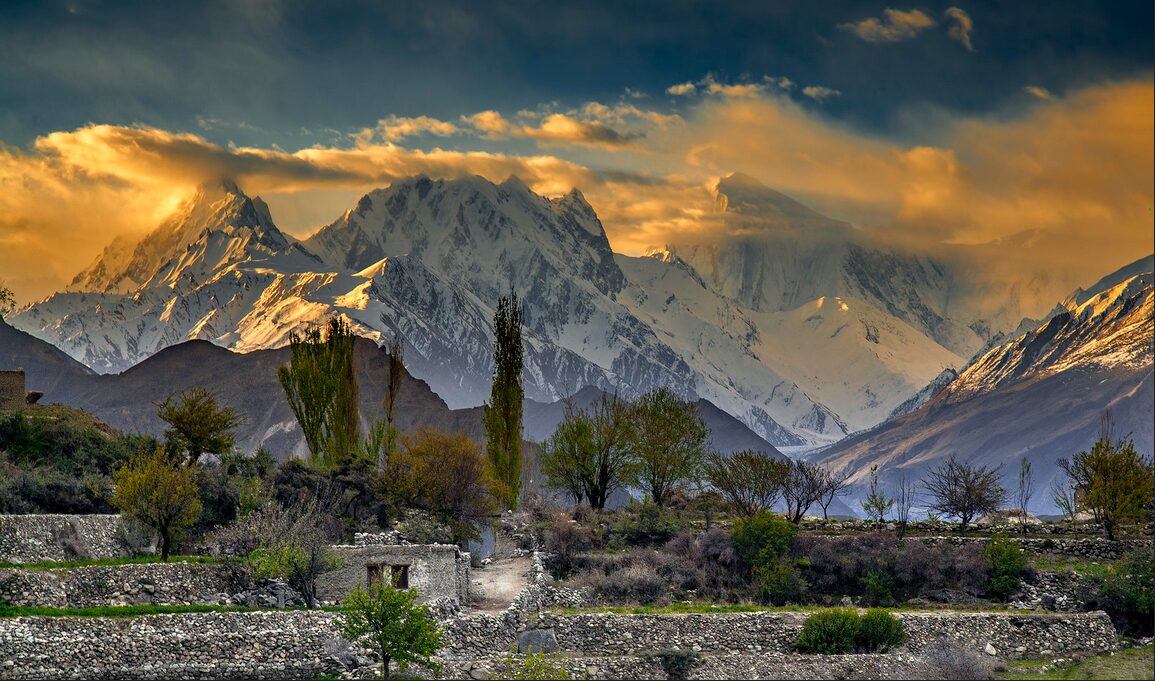A Haven in the Heights: The Serene Himalayan Resting Place
The Himalayas, often called the “abode of snow,” stretch majestically across Bhutan, China, India, Nepal, and Pakistan. This breathtaking mountain range is more than just a geographical feature; it is a rich tapestry woven with cultural, spiritual, and ecological significance. Central to this landscape is the concept of the Himalayan resting place—sanctuaries where individuals can find peace and reconnect with nature. This exploration highlights the allure and importance of these serene spots.
A Natural Marvel
The Himalayas are famous for their towering peaks, including the iconic Mount Everest, which rises to 8,848 meters (29,029 feet). This impressive natural barrier shapes the landscape and significantly influences the climate and biodiversity of surrounding areas.
- Ecosystems Galore: From Bhutan’s lush valleys to Tibet’s arid plateaus, the Himalayas boast a variety of ecosystems, each supporting unique plants and animals.
- Biodiversity Hotspot: Rare species, such as the elusive snow leopard and the vibrant blue poppy, thrive here, making the region crucial for conservation.
Cultural Melting Pot
The cultural richness of the Himalayas rivals its natural beauty. This region serves as a crossroads of languages, traditions, and religions, creating a vibrant hub of spirituality and heritage.
- A Crossroads of Beliefs: The mountains host serene Buddhist monasteries in Bhutan and Tibet alongside sacred Hindu temples in India, reflecting the resilience and spirituality of local communities.
- Vibrant Traditions: Unique lifestyles deeply intertwined with the rhythms of the mountains are showcased through traditional festivals, music, and crafts that resonate with visitors.
The Concept of the Himalayan Resting Place
The idea of a “Himalayan resting place” goes beyond physical geography; it symbolizes a refuge for spiritual renewal and connection with nature.
- Remote Beauty: Many of these sanctuaries are secluded, emphasizing that true peace often requires a journey—both physical and spiritual.
- Meditative Retreats: These sites invite introspection, allowing visitors to escape daily chaos and immerse themselves in nature’s tranquility.
Historical Significance
Historically, the Himalayas have drawn pilgrims seeking enlightenment.
- The Pilgrim’s Path: Treks to these resting places symbolize personal journeys, representing the challenges one must overcome to achieve higher consciousness.
- Legends and Myths: Many sites are steeped in folklore, enhancing their allure and spiritual significance.
Modern Pilgrimages
Today, the notion of the Himalayan resting place has evolved, attracting a diverse crowd.
- A Diverse Crowd: These sites welcome not only spiritual seekers but also adventurers and tourists eager to escape modern life’s stresses.
- Healing and Wellness: Many visitors come for rejuvenation, engaging in yoga, meditation, and holistic practices amid the stunning mountain scenery.
Notable Himalayan Resting Places
Lumbini, Nepal
Recognized as the birthplace of Siddhartha Gautama, known as Buddha, Lumbini is a UNESCO World Heritage site.
- Spiritual Center: The Maya Devi Temple marks the location of Buddha’s birth and attracts thousands of pilgrims each year.
- Tranquil Surroundings: The area features serene gardens and monasteries, fostering a peaceful environment for reflection.
Rishikesh, India
Known as the “Yoga Capital of the World,” Rishikesh serves as a hub for spiritual growth.
- Yoga Retreats: The town is filled with ashrams where visitors can immerse themselves in yoga and meditation practices.
- Sacred River Ganges: Located along the banks of the Ganges, Rishikesh offers a community-focused atmosphere enriched with shared spiritual purpose.
Paro Taktsang, Bhutan
Also known as the Tiger’s Nest Monastery, Paro Taktsang is an iconic site perched high above the Paro Valley.
- Cliffside Location: The monastery provides breathtaking views and a profound sense of serenity, accessible only through a challenging trek.
- Cultural Importance: Believed to be where Guru Rinpoche meditated, this location holds deep spiritual significance.
Dharamsala, India
Home to the Dalai Lama, Dharamsala is a key center for Tibetan Buddhism.
- Meditation Centers: The town features numerous spaces for meditation, inviting visitors to experience Tibetan spirituality.
- Stunning Backdrop: The Dhauladhar mountain range offers a breathtaking setting for contemplation and peace.
The Journey to the Himalayan Resting Places
Physical Challenges
Reaching these resting places often requires navigating rugged terrain and unpredictable weather.
- Endurance Required: The journey tests physical strength and resilience, mirroring the inner quest for peace and understanding.
- Nature’s Embrace: Each trek deepens one’s connection to the majestic landscape, enriching the spiritual experience.
Spiritual and Emotional Transformation
The physical journey frequently leads to profound inner changes.
- Self-Discovery: Travelers often confront fears and limitations, resulting in significant personal growth.
- Awakening Moments: Arriving at these remote sanctuaries brings clarity and spiritual renewal.
Ecological Impact
While tourism can benefit local economies, it also poses risks to the fragile Himalayan ecosystem.
- Sustainable Tourism: Eco-friendly practices are essential for preserving the beauty and integrity of these sites for future generations.
- Community Involvement: Engaging local communities in sustainable tourism helps balance economic benefits with ecological preservation.
The Future of Himalayan Resting Places
Balancing Tourism and Conservation
As interest in the Himalayas grows, maintaining a balance between tourism and conservation is crucial.
- Eco-Friendly Initiatives: Projects focusing on waste management and responsible tourism aim to minimize environmental impacts.
- Visitor Awareness: Educating tourists about sustainable practices is vital for protecting these pristine areas.
Cultural Preservation
Preserving the unique cultural heritage of Himalayan communities is essential as tourism expands.
- Support Local Traditions: Encouraging the continuation of local crafts, languages, and customs helps maintain cultural identity.
- Cultural Engagement: Tourists are encouraged to engage with local traditions, enriching their experiences and supporting the community.
The Role of Technology
Advancements in technology can improve access to these remote resting places while supporting conservation.
- Improved Infrastructure: Better roads and communication enhance visitor experiences without compromising the environment.
- Economic Opportunities: Local communities can benefit from technology, provided it aligns with conservation goals.
Conclusion
The Himalayan resting place represents more than just a destination; it is a transformative journey into one of the world’s most awe-inspiring landscapes. This region offers a unique blend of natural beauty, cultural richness, and spiritual depth that continues to inspire people from all walks of life. Whether seeking solace in the tranquil temples of Lumbini, finding peace in the yoga retreats of Rishikesh, or embarking on a pilgrimage to the Tiger’s Nest in Bhutan, the Himalayas serve as a sanctuary for those looking to rest, reflect, and reconnect with the essence of life.
Frequently Asked Questions?
What are the best times to visit the Himalayan resting places?
The ideal times to visit are during spring (March to May) and autumn (September to November), when the weather is typically mild and pleasant.
Are these resting places accessible for everyone?
Many sites require trekking and may not be suitable for those with mobility challenges, but some accessible options exist.
Why is Lumbini significant?
Lumbini is the birthplace of Buddha and a UNESCO World Heritage site, attracting pilgrims and tourists from around the globe.
How can tourists minimize their environmental impact?
Tourists can practice responsible tourism by reducing waste, respecting local customs, and supporting eco-friendly businesses.
What is Rishikesh known for?
Rishikesh is renowned as the “Yoga Capital of the World,” drawing those interested in yoga, meditation, and spiritual practices.







